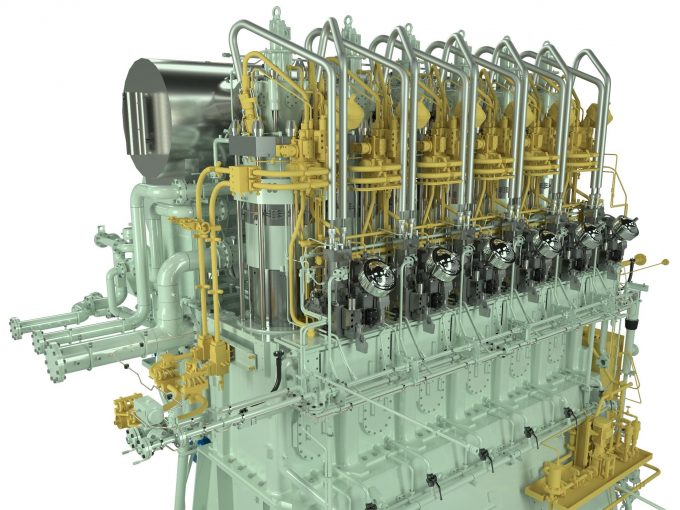AD Ports' Noatum buys Spanish finished vehicle logistics specialist
Less than a year after buying Spanish ports and logistics group Noatum in a $660m ...
GM: RAISING THE ROOF GGM: IN FULL THROTTLE GZIM: MAERSK BOOST KNIN: READ-ACROSSMAERSK: NOT ENOUGHMAERSK: GUIDANCE UPGRADEZIM: ROLLERCOASTERCAT: HEAVY DUTYMAERSK: CATCHING UP PG: DESTOCKING PATTERNSPG: HEALTH CHECKWTC: THE FALLGXO: DEFENSIVE FWRD: RALLYING ON TAKEOVER TALKODFL: STEADY YIELDVW: NEW MODEL NEEDEDWTC: TAKING PROFIT
GM: RAISING THE ROOF GGM: IN FULL THROTTLE GZIM: MAERSK BOOST KNIN: READ-ACROSSMAERSK: NOT ENOUGHMAERSK: GUIDANCE UPGRADEZIM: ROLLERCOASTERCAT: HEAVY DUTYMAERSK: CATCHING UP PG: DESTOCKING PATTERNSPG: HEALTH CHECKWTC: THE FALLGXO: DEFENSIVE FWRD: RALLYING ON TAKEOVER TALKODFL: STEADY YIELDVW: NEW MODEL NEEDEDWTC: TAKING PROFIT

MAN Energy Solutions claims some 2,300 engines currently in service could be retrofitted to run on green fuels, potentially resolving a major hurdle for the decarbonisation of shipping.
MAN would not say how many of these engines were in operation on container vessels; however, assuming carbon-neutral e-fuels can be made available in sufficient quantities, this “massive number” of retrofits could reduce CO2 emissions from the maritime industry by 80m tonnes annually, said Klaus Rasmussen, MAN PrimeServ head of projects and PVU sales.
“The huge market potential within, for example, S/G50-, G95- and G80-bores for conversion to methanol running as ME-LGIM units is especially notable,” he said.
Retrofit could be achieved with the addition of a new fuel tank and feed system, as well as switching the gas block, injectors and pipes on the engine itself.
“No one beside MAN ES has a proven track record in converting two-stroke engines into dual-fuel engines,” Thomas Hansen, MAN Energy Solutions head of promotion and customer support, told The Loadstar.
“The design of the specific dual-fuel variants (bore-sizes) is subject to the market demand, which in turn leads to our development of specific dual-fuel engine bore sizes accordingly.”
The findings unlock the potential for hulls already on the water to convert to carbon-neutral fuels, rather than requiring an entirely new generation of ships to be built, addressing recent concerns over ‘stranded assets’.
Their owners would then be free to plough capex savings into the increased opex of new e-fuels, which are expected to cost several times the price of today’s fuels.
“Retrofit offers the attractive opportunity to prolong the lifetime of vessels from a technical, emission and commercial perspective (future-proof),” said Mr Hansen.
One of the less-often talked about benefits of retrofitting is a potential reduction in CO2 from the imbued carbon costs of building generations of new ships. Historically, shipping tends to respond to new emissions requirements by building new hulls and scrapping old ones; but according to recent estimates, a major shipyard requires about 200m KWh of electricity annually, meaning that there is a carbon cost to that option.
However, Mr Hansen said MAN’s announcement should not be taken as endorsing a specific future fuel type, and the firm was taking “an agnostic approach” to retrofit possibilities.
“The future-fuel landscape will consist of many different fuels, including green methanol, green and blue ammonia, bio-methane, synthetic natural gas and bio-fuels. There will not be one clear winner for all vessel sizes, types [and] trades.”
Comment on this article